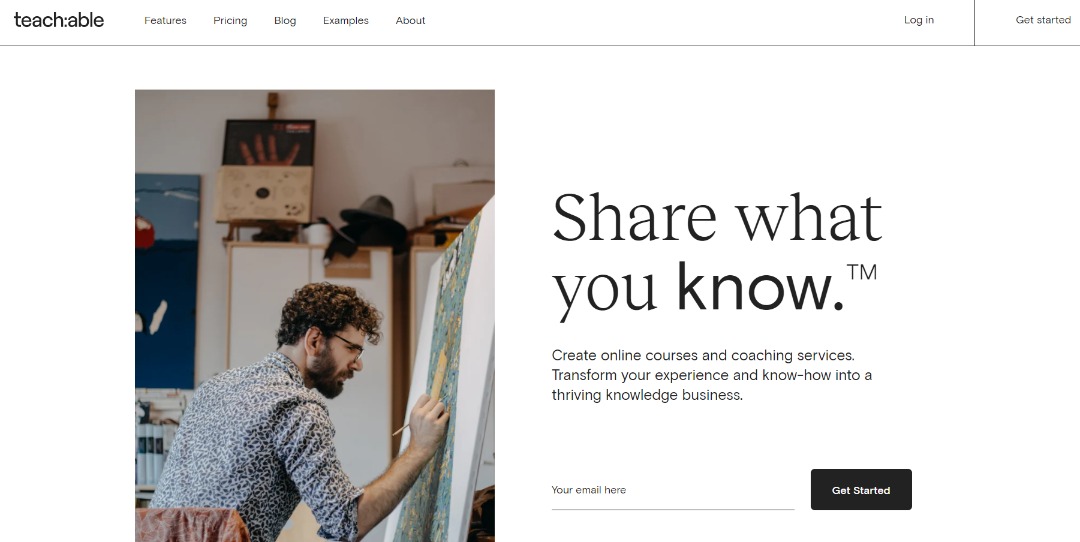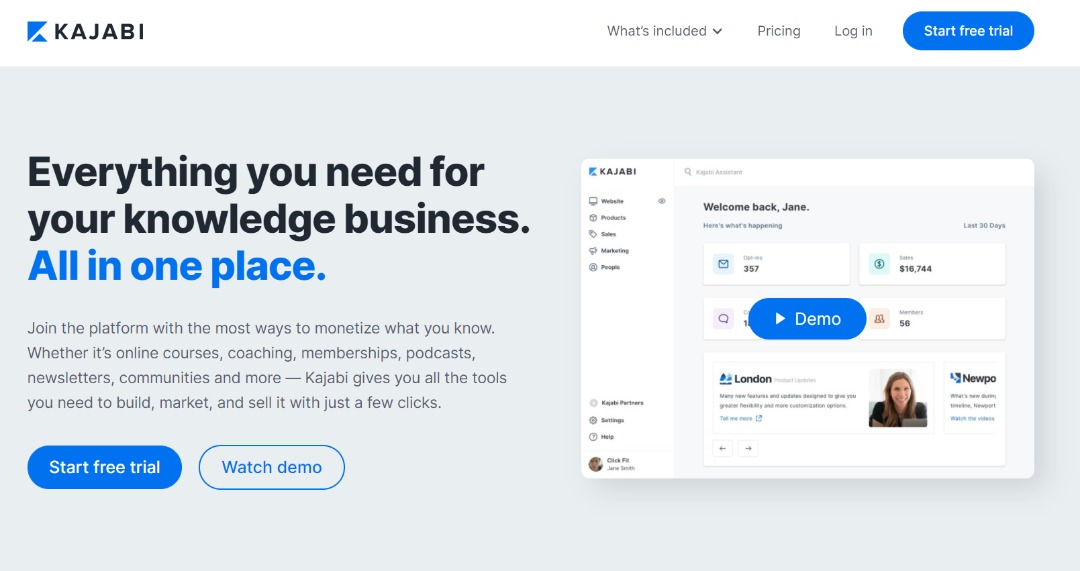Launching an online course is a big upfront investment. It takes you time to develop the course that you’re taking away from client work, for example. Plus, unless you’ve pre-sold the course, it’ll take a while to make a profit. But once your course is set up, it’ll practically run itself. And you just have to focus on marketing it and building a community.
That said, your early choices when building your course have a long-term effect on your business. A great setup from the start can save you tons of headaches and make your marketing (and user experience) amazing.
The main options for launching an online course are posting it on a learning system (Skillshare, Udemy, and the like) or setting up your own system (YouTube videos, your website, etc). So let’s see how they compare:
Three things to consider when choosing where to launch your online course
Paying for hosting or paying subscriptions
When you use a platform like Skillshare for your course, you make a commission per viewer. According to their payment terms, you get paid for every minute a student watches your course. In my opinion, this limits what you can do because it focuses on quantity (more minutes + more students = more money). That said, the benefit of using a learning network is that you don’t have to pay to post your course.
However, self-hosting a course on platforms like Teachable and Kajabi implies a subscription that’s often on the pricey side. And you’ll be paying for this regardless of having students or not. The extra freedom of hosting your own course may be worth it if you have an established business, but it can be hard for a newer one.
Promoting your online course
If you already have an engaged audience, that’s great news for self-hosting your course. Otherwise, you’ve got to invest time and money into growing your following and connecting with them so that, once you launch a course, there’s already someone excited to sign up.
The exposure from a learning platform may boost your course since it’s available to thousands of subscribers. Still, it’s up to you to attract and engage them with high-quality content, visuals (like thumbnails), and a strong presentation. Your topic, title, and description are the main elements in getting noticed.
On the flip side, it’s up to you to engage with users through emails, new content, and staying relevant so they complete your courses and come back for future ones. This way you can turn your online course into a long-term revenue stream.
The tech side of hosting an online course
Let’s stick to the Skillshare example: On a platform like that, posting your course is a lot like loading content to social media. It’s an easy setup and you don’t need to worry about design or e-commerce. Just load your course content and hit publish! This is great for a quick launch and takes less upfront work, which offsets the fact that you’re competing with others for views, just like on social media.
Now let’s look at online teaching platforms like Kajabi and Teachable: Their setup includes design, a funnel, and payment integrations. It’s definitely more involved, but also more robust. But you also get more freedom and a branded course that aligns with your business and integrates with your platform.
With all this in mind, here’s a look at the most popular online teaching platforms to host an online course.
The most popular online teaching platforms

Teachable
Teachable is a go-to for many creatives launching an online course. Our own Launch with Moxie course is hosted there!
The biggest pros of Teachable include:
- An interface that’s easy to customize to your business for a truly branded learning experience. In fact, most users mention that Teachable is easier to set up than Kajabi.
- The possibility to bring contributors and even pay them from within the platform. This is great if you’re bringing guests, admin support, authors, etc.
- Comprehensive insights for both sales and student info, so you know how your course is doing in a simple panel.
- Finally, quoting their own website, “Unlimited Everything,” which includes video bandwidth, courses, and students on any paid plan.
If you’re curious about Teachable, head over to their Features page to get a more in-depth view and see whether it ticks the right boxes for you.
Another thing I like about Teachable is that it offers a pretty extensive free plan. Compared to most platforms with super limited starter plans or short trial periods, with Teachable you can give it a run before choosing a paid plan, which starts at $29 per month.

Thinkific
Compared to Teachable, Thinkific is a steeper cost for two reasons: On one hand, the free plan is a lot more limited, and on the other, the lowest priced plan is still nearly 2x as much as Teachable at $49 per month. Considering how much you can do with Teachable’s free plan, this definitely sways a lot of decisions.
That said, Thinkific is a platform where you can easily set up an online course on your own, even without being super techy. And students can access your course easily and the most out of the experience.

Kajabi
Kajabi is geared towards growing your business through funnels and comprehensive marketing — not just courses. As such, the platform is very robust and some people have a hard time navigating it.
Something else to keep in mind with Kajabi is that the price tag is a lot higher for a starter plan compared with Teachable and Thinkific at $149 per month. On the plus side, Kajabi integrates pretty much every tool you need to grow a business, from funnels and email marketing to memberships and payments. So setting it up from the beginning could save you the headache of integrating other tools for each portion of your marketing.
Deciding what’s the best platform to host your online course
For us, it makes sense to self-host an online course on a teaching platform because of the freedom it gives you. Plus, hosting it yourself this way means you get to target an audience that aligns with your dream customers, whereas on learning subscription models, you get a broader audience that’s yet to be qualified.
Alas, you’re not forced to pick! You can test both options and even host your courses on multiple platforms to find what works best for your business. You may find that a combination is effective for your goals — or falling in love with either style.
Ready to launch your online course?

Not sure where to start? Head over to Do I need a website or a sales page? to get the clarity you need.